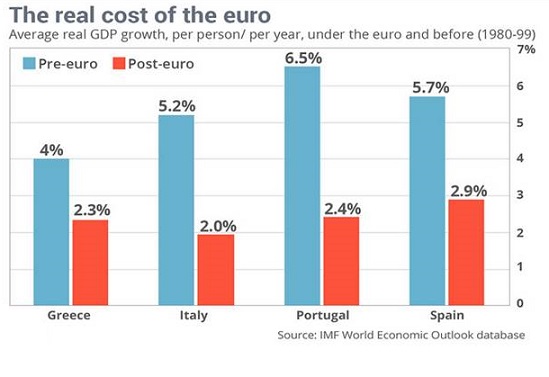If you don't like numbers skip
this paragraph. The U.S. Census Bureau has published highlights of the Annual
2014 Characteristics of New Housing. There were 620,000 single-family homes
completed in 2014 and of these, 565,000 had air conditioning, 64,000 had two
bedrooms or less whereas 282,000 had four bedrooms or more, 263,000 were
one-story homes and 221,000 homes had three or more bathrooms. In 2014, 264,000
multifamily units were completed, with 127,000 in buildings with 50 units or
more, 123,000 had two or more bathrooms and 23,000 were age-restricted. Of
the 437,000 single family homes sold in 2014, 314,000 were in a homeowner's
association, 311,000 were paid using conventional financing whereas 37,000
were paid for in cash, 137,000 had both a patio and porch and 244,000 had two
stories. The average sales price of new single-family homes sold was $345,800,
the average price per square foot for new single-family homes sold was $97.09
and the median size of a new single-family home sold was 2,506 square feet.
On
the flip side, and it isn't the first and won't be the last, after three years
of giving it a go Discover Financial Services is
shutting down its struggling home-lending business and laying
off 460 employees, many of them in Irvine, California. I am sure compliance
costs factored into things... let me know when those borrowers become better
off! [Readers can post resumes at www.LenderNews.com.]
A Primer (from MCT) on Loan
Level Hedge Cost
Over the last 18 months we have
seen a sharp increase in the number of hedging clients who are requesting the
calculation of loan level hedge cost estimates. While there are some
required assumptions and a few limitations to any such analysis, we will briefly
outline an intuitive and mathematically sound method for estimating loan level
hedge cost. We will then thoroughly review the necessary assumptions.
In explaining this methodology,
we will use the case of a locked open pipeline hedged with TBAs and accordingly
all hedge costs in our example are the result of TBA pair offs. Hedge cost
resulting from forward contract pair offs can be stratified using the same
method. We define the hedge period as the window of time between the point the
lender confirms the interest rate lock commitment to the borrower (pipeline
entry) and the loan is funded and immediately committed to the agency or
aggregator (pipeline exit). For purposes of this example we use the term hedge
cost, although in a rising rate environment hedge gains would be distributed in
the same manner.
The first step in the
calculation will be to distribute the hedge costs across all loans in the
population, on a loan amount weighted basis. The primary factor in determining
the hedge cost associated with a particular loan is the market movement that it
has experienced while in the hedge. Thus, the next step will be to calculate
the weighted average market movement of all loans in the analysis by taking the
difference in market levels between the time at which the loan was initially
locked and the time it was committed out of the pipeline. In order to correctly
include the loan's duration in the analysis, the price movement of the
appropriate security type and coupon must be used. This is needed because when
hedge costs are compared across a population of loans, assets with higher
durations carry more weight due to the fact that they will move faster given a
change in interest rates compared to those with lower durations.
The next step of the analysis
will be to calculate the deviation from mean market movement for each loan and
then apply this figure to the corresponding loan amount weighted hedge
cost. This will give us a loan level hedge cost that has been adjusted
for the given loan's market experience versus the overall loan population in
the analysis.
The second and final adjustment
will be made for time in the hedge. As with the market movement adjustment we
first calculate the weighted average time that the population of loans spent in
the hedged pipeline. We then calculate the deviation from the mean lock period
for each loan. Finally, we multiply this figure by the weighted average TBA
roll cost for the securities that were paired off during the analysis period.
We now have arrived at a loan
level hedge cost estimate that accounts for duration weighted market movement
and the time decay that occurred on the hedge while the loan was in the hedged
pipeline. The results are intuitive in that the sum of these loan level hedge
costs will always exactly tie back to the actual hedge costs that were incurred
during the given period.
A significant benefit to this
calculation is that hedge cost by channel, branch or even originator can be
estimated by using an adaptation of the model. If we distribute the hedge cost
incurred over the period of analysis across fallout as well as funded
production, the hedge cost generated from a specific segment of production can
be estimated. With the hedge cost of fallout included, we can get closer to
arriving at the actual hedge performance of any segment of production (i.e.,
Product, Channel, Branch or Originator).
As discussed in the
introduction, this analysis has one limitation that can potentially compromise
the accuracy of the result. Timing discrepancies between hedge and asset
execution will cause gains or losses to be pent up in the open pipeline and
thereby introduce noise into the historical population. As a result, the
primary limitation of this analysis is a function of the look back period.
Hedge cost values calculated from two different time periods cannot be compared
and thus a specific time horizon for the analysis must be chosen. The loan
level value calculated above is subject to profitability timing with the
analysis period. A hedge cost analysis that examines a one month window of
production will be extremely susceptible to timing issues. A three month
period is better and twelve month look back period would be optimal. The
problem of course is that a year is long time to wait for an estimate of hedge
cost on a loan that funded today. Thus, accuracy is obtained at the expense of
the utility of the result.
The primary assumption in the
analysis is relatively intuitive in that all loans are considered to be equally
lucky or unlucky in the market as well as with regards to pull through model
errors. In other words, we assume the hedge position was initiated with
the same priority for all loans and pull through assumptions were equally as
accurate or inaccurate for all loans. The error equivalence can be relieved by
adding pull through back testing to the examination; however this substantially
complicates the analysis. Additionally, it is important to note that a
discrepancy or error between forecasted and actual pull through error does not
necessarily equate to a higher hedge cost for a given loan during a certain
period (i.e. forecasting too high of a pull through rate during a period in
which rates rose).
While there are various methods
that can be employed to control for timing as well as relieving other
assumptions, accuracy is inevitably traded for practicality and usefulness of
the result. Bottom line, we at MCT have found this to be the most
reliable method for calculating interpretable and intuitive loan level hedge
cost figures. As illustrated in the assumptions above there are far too many
caveats that accompany the analysis for any decisions to be made solely from
the results. Most importantly, we implore any lender not to use the results of
this analysis for compensation purposes. With that said, stratifying hedge
costs across a given population of production in this manner will give solid
directional guidance to hedge performance.
Housing starts dropped 11.1% in
May to 1.036 million although April was revised higher from 1.135 to 1.165
million. Building permits rose 12% however to 1.275 million - the highest in 8
years. Housing starts have been very volatile, so it makes more sense to look
at the trend, which is generally up.
For interest rates we closed
out the 10-year at 2.32% on Tuesday. The scheduled, potentially market-moving
news for today consists of the FOMC rate decision at 2PM EDT, 8PM Croatia time.
At this point it would be a real shock if the Fed did anything to short-term
rates.

